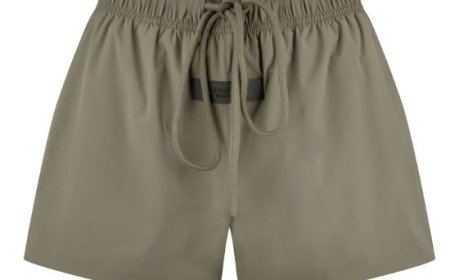History of Sports Uniforms and Their Evolution From Function to Fashion: A Journey Through Time
Explore the evolution of sports uniforms from wool and flannel to moisture-wicking, high-performance gear. Discover how fashion meets function in sportswear.

From Function to Fashion: A Journey Through Time
Imagine stepping onto a field in the late 1800s. The air smells of leather and fresh-cut grass. Youre dressed in wool, wearing high socks and heavy boots not because its stylish, but because thats all thats available. Fast-forward to today, and modern sports uniforms are sleek, moisture-wicking, and customized with cutting-edge technology. The transformation of athletic apparel over the decades tells a fascinating story of innovation, identity, and performance.
In this blog, well dive deep into the evolution of custom football uniforms, from their humble beginnings to todays high-performance designs.
Origins of Sports Uniforms: The 1800s
The Rise of Organized Sports
The late 19th century saw the rise of organized sports like baseball, cricket, and soccer. With official rules came the need for standardized team uniforms to identify players on the field.
-
Baseball Uniforms became the first true sports kits, with the New York Knickerbockers introducing a full uniform in 1849.
-
Early fabrics used were wool or flannel, prioritizing warmth over mobility.
-
Team colors and simple logos began appearing to distinguish clubs.
1900s1940s: Function Over Comfort
Military Influence and Standardization
The early 20th century saw sports uniforms become more standardized and influenced by military attire, especially in Europe and the U.S.
-
Soccer and rugby teams adopted collared shirts, heavy cotton fabrics, and long shorts.
-
Olympic teams wore matching tracksuits to promote national unity.
-
Logos and team badges gained popularity for identity.
However, comfort and breathability were still secondary concerns, and many athletes played in gear that restricted movement.
1950s1970s: The Birth of Branding and Synthetic Fabrics
Innovation Begins
After World War II, fabric technology saw a revolution.
-
Synthetic fibers like nylon and polyester replaced wool, making uniforms lighter and more breathable.
-
In the U.S., American football and basketball teams started using bold colors and mascots to boost fan engagement.
-
Television broadcasting made appearances matter teams started investing in better visual aesthetics.
This era also marked the rise of sportswear brands like Adidas, Puma, and Nike, integrating performance with marketing.
1980s1990s: Style Meets Performance
Athletic Identity and Pop Culture
By the 1980s, sports uniforms were no longer just gear they became cultural symbols.
-
The NBA introduced baggy shorts and sleeveless jerseys, popularized by icons like Michael Jordan.
-
Soccer kits became more colorful and fitted, with sponsorship logos gaining prominence.
-
Custom Baseball Jerseys adopted mesh panels for improved ventilation.
Fans began wearing replica jerseys, merging sports and street fashion. Uniforms became a form of personal and team identity.
2000sPresent: The Science of Sportswear
High-Tech Performance Gear
Modern sports uniforms combine technology, sustainability, and fashion.
-
Moisture-wicking materials, compression fabrics, and laser-cut ventilation zones help athletes perform at their peak.
-
Teams now use data-driven designs from body heat mapping to muscle group support.
-
Customization options have exploded with digital printing, heat-transfer logos, and 3D embroidery.
Brands like RBZ Apparels are at the forefront of delivering custom sports uniforms that reflect team spirit while enhancing athletic performance.
Cultural and Social Impact of Uniforms
More Than Just a Jersey
Beyond function and fashion, sports uniforms carry deep social and cultural significance.
-
Uniforms are worn during protests (e.g., kneeling during anthems).
-
Pink jerseys are worn for breast cancer awareness.
-
National teams wear specially designed kits for World Cups and Olympics to represent heritage.
They are symbols of unity, pride, and social commentary.
The Future of Sports Uniforms
Smart, Sustainable, and Individualized
The next era of sports uniforms is being shaped by:
-
Smart fabrics that monitor vitals
-
Eco-friendly materials like recycled polyester and organic cotton
-
Augmented reality integration for fan interaction
-
Gender-inclusive and adaptive uniforms for better representation
As customization grows, so does the role of sportswear in shaping both athlete performance and fan experience.
Example usage in your blog:
At RBZ Apparels, we continue this legacy by offering high-quality, custom sportswear designed for the athletes of today and tomorrow.
Get a Quote Now to create your own custom uniforms.
Conclusion: From Cotton to Cutting-Edge
The history of sports uniforms is a mirror to society reflecting changes in technology, identity, and cultural values. What began as a way to distinguish teams has become a multi-billion-dollar industry that impacts performance, fashion, and global culture.
At RBZ Apparels, we continue this legacy by offering high-quality, custom sportswear designed for the athletes of today and tomorrow.

































